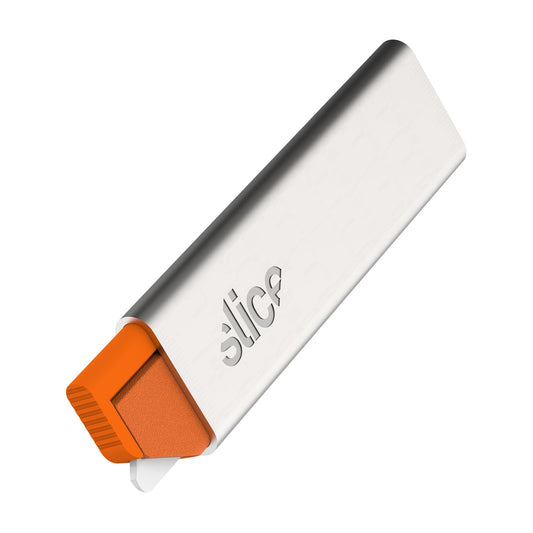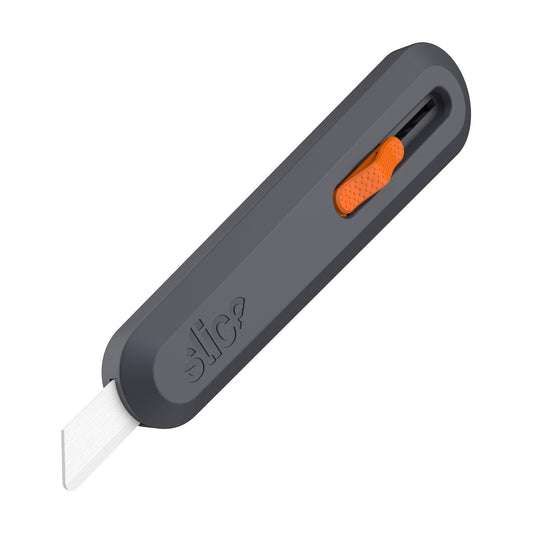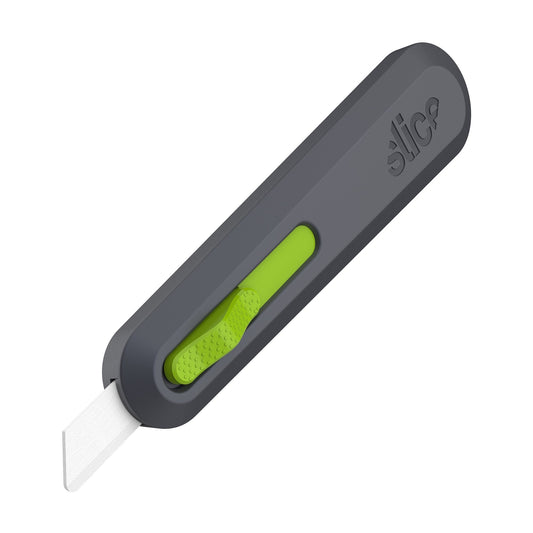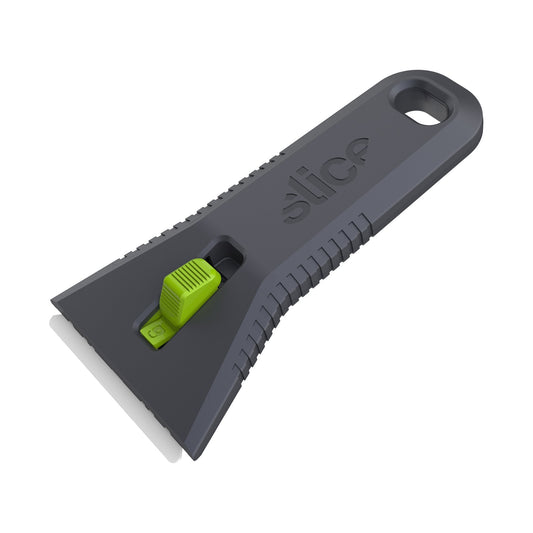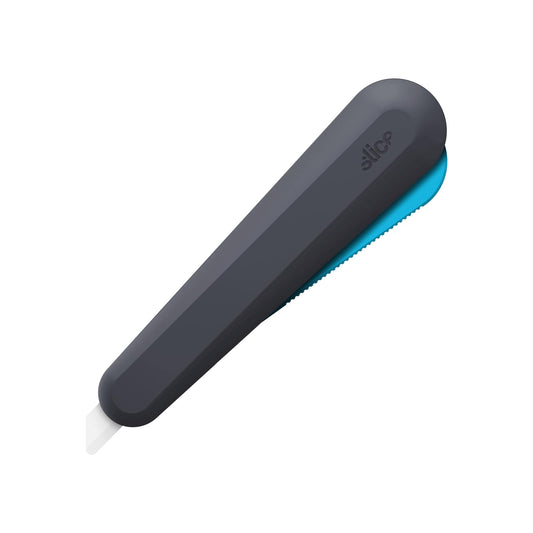SKU #10528
Lame per cutter (a punta)
Le lame per cutter Slice® 10528 hanno una punta affilata ideale per i tagli che richiedono una perforazione iniziale. Come tutte le lame di sicurezza in ceramica Slice, le nostre lame 10528 non producono scintille, non sono magnetiche, sono chimicamente inerti, sicure fino a 1600 gradi Celsius e non si arrugginiscono mai. Queste lame sono compatibili con tutti i modelli di cutter Slice.
- Tipo di lama: di ricambio, a punta
- 3 lame doppie per confezione
- Strumenti compatibili: 10477, 10479, 10550, 10554, 10558, 10562, 10563, 10564, 10585, 10591, 10593
- Lame a prova di dita che rimangono affilate 11 volte più a lungo
- Riducono gli incidenti, diminuiscono i costi
- Non producono scintille, non conducono elettricità, non sono magnetiche
- Sicure fino a 1600 gradi Celsius
- Chimicamente inerti, non arrugginiscono mai
- Sostituzione lama senza l’uso di strumenti aggiuntivi
- Meno sostituzioni della lama = meno incidenti
- SKU #10528
Product Specifications
Product Specifications
Cutting Depth:
Material: zirconium oxide
Dimensions: L x W x H
Weight: 0.026 kg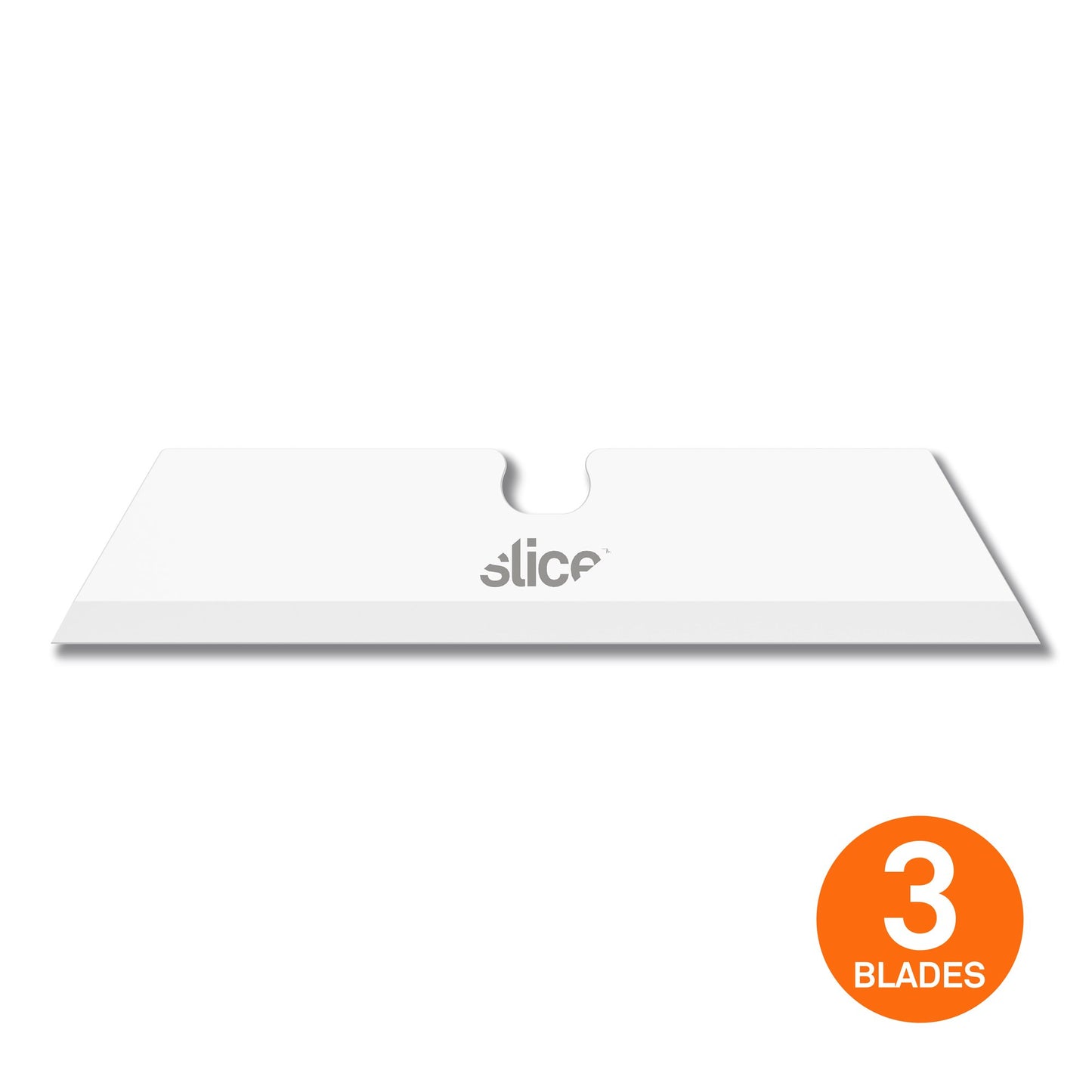
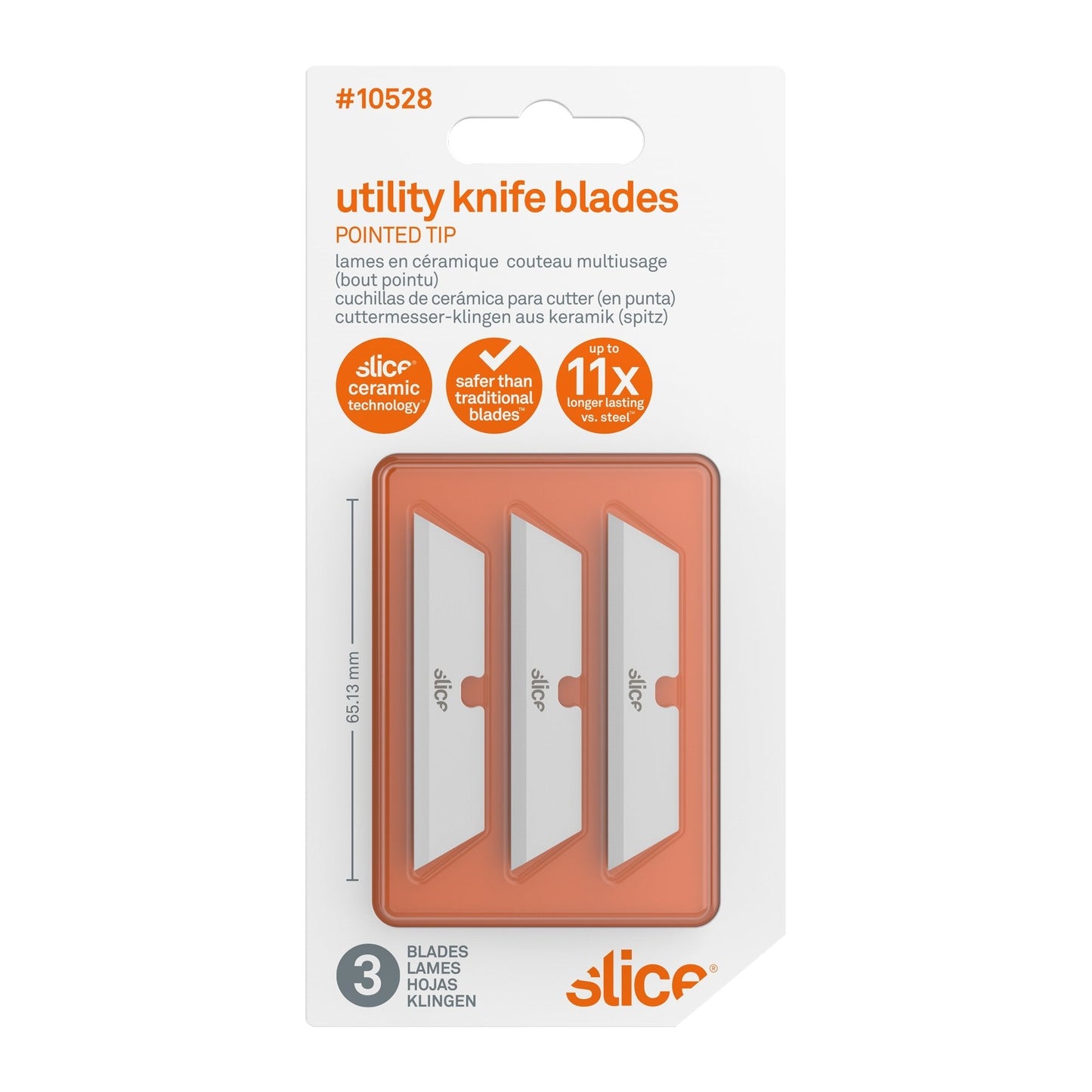

Compatible Products
Videos
-
Cut Roof Membrane Safely With Slice
-
How to Cut Pallet Wrap and Banding
-
How to Cut Ceiling Tile: Safety First
-
How to Cut Corrugated Plastic Sheets Using Slice Tools
-
How to Cut Drywall Safely With Slice
-
How To Cut Mylar Stencils
-
Cutting Ram Board®
-
How to Cut Super Sacks® Easily and Safely
-
How To Cut Window Screen Using Slice Tools
-
The Correct Technique to Cut Plastic Banding
-
Blade Replacement for the Folding Utility Knife
-
Replacing Carton Cutter Blades
-
Blade Replacement on Slice Utility Scrapers
-
Blade Replacement for Slice Utility Knives
Related Products
FAQ
Are Slice Ceramic Utility Knife Blades Safer?
Compared with standard blades (that’s steel or traditional ceramic), the answer is yes. When you search “how to change a utility knife blade”, you learn that the process is often dangerous. Overly sharp blades leave your hands vulnerable to injury.
Because we developed a proprietary finger-friendly edge for our ceramics, handling a Slice ceramic blade is less dangerous than handling a traditional ceramic or steel utility knife blade. Our manufacturing process creates an edge that effectively cuts material but is safe to the touch.
Slice utility knife replacement blades are made from hard zirconium oxide. That, along with our manufacturing process, is why our blades hold their edge, on average, 11.2 times longer than steel. This means you’ll be handling your blade much less often, which also reduces the chance of injuries.
Because we developed a proprietary finger-friendly edge for our ceramics, handling a Slice ceramic blade is less dangerous than handling a traditional ceramic or steel utility knife blade. Our manufacturing process creates an edge that effectively cuts material but is safe to the touch.
Slice utility knife replacement blades are made from hard zirconium oxide. That, along with our manufacturing process, is why our blades hold their edge, on average, 11.2 times longer than steel. This means you’ll be handling your blade much less often, which also reduces the chance of injuries.
Which Type of Utility Knife Blade Should I Use for the Job?
The best utility knife blades will depend on your application. For most cuts, our 10526 (rounded tip) blades will do the job. The rounded tip provides an added layer of safety against accidental puncture wounds. For some materials, though, a pointed tip is required. A pointed tip initiates a clean cut with a piercing action and is best used for materials like shrink wrap, laminating sheets and plastic banding.




